Earliest Evidence for Microbial Life on Land
Fossils which reputedly show evidence of microbial life in hot springs have been found in Australian rocks that date from 3.48 billion years ago. The hot spring deposits found in the Pilbara region of Western Australia, have pushed back by some 580 million years, the earliest known existence of micro-organisms living in terrestrial freshwater habitats, albeit, in a very inhospitable place. This discovery has reignited the debate as to where the first life on planet Earth might have originated.
Tiny Bubbles Preserved in the Rocks Could Demonstrate Early Microbial Life in Hot Springs
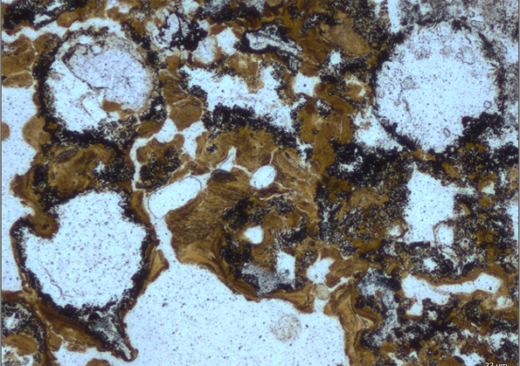
Spherical bubbles preserved in 3.48 billion year old rocks in the Dresser Formation in the Pilbara Craton in Western Australia provide evidence for early life having lived in ancient hot springs on land.
Picture credit: University of New South Wales
The Remote Pilbara Region of Western Australia
The remote and very beautiful Pilbara region of Western Australia has exposures of extremely ancient sandstones, some of the oldest sedimentary rocks known. These strata were formed in the Paleoarchean Era and it has been at the centre of research for evidence of micro-fossils and signs of very early life on Earth for a number of decades. The Australian authorities are hoping to get UNESCO World Heritage status recognition for those parts of the Pilbara Craton that have provided evidence for very primitive, organic lifeforms.
To read an article from 2011 about micro-fossils preserved in Pilbara sandstones that indicate microbial life from 3.4 billion years ago: Are These the Oldest Fossils on Earth?
A Freshwater or a Marine Origin for Life on Earth?
The debate as to when life on Earth began has caused great controversy amongst scientists. Resolving when the very first organisms evolved has proved extremely difficult, for example, back in the autumn of 2016, Everything Dinosaur published an article about an intriguing study of ancient Greenland rocks that might show evidence of microbial life, specifically stromatolites that existed in a shallow marine environment some 3.7 billion years ago.
For the article on the research on the Greenland rocks: 3.7 Billion-Year-Old Microbes?
What is equally as controversial, is where on Earth did life begin?
Writing in the academic journal “Nature Communications”, lead author, PhD student Tara Djokic (University of New South Wales) and her fellow researchers conclude that parts of the Pilbara Craton strata were formed from hot spring deposits and these rocks provide evidence that life may not have originated in a marine environment.
The Remote and Desolate Sandstone Ridges Represent Strata Formed Some 3.48 Billion Years Ago
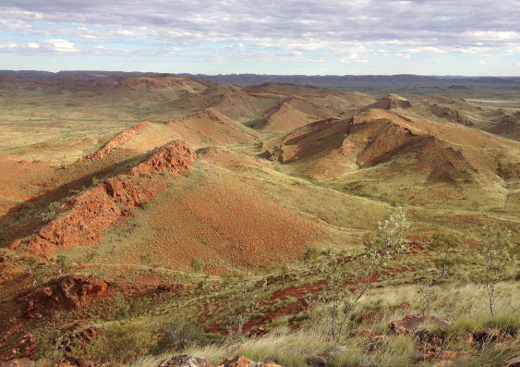
Ridges in the ancient Dresser Formation in the Pilbara Craton of Western Australia that preserve ancient stromatolites and hot spring deposits.
Picture credit: Kathleen Campbell
Extremophiles Living in Hot Springs (Microbial Life)
Scientists are aware that microbial life such as bacteria and those other prokaryotes – archaea are capable of surviving in very hostile environments. The specialised archaea are often referred to as extremophiles as these organisms can tolerate and thrive in environments that would prove fatal to most other forms of life. These extreme conditions include heat and high concentrations of noxious materials, the sort of conditions you can find in a geyser or hot spring.
Tara and her co-workers, which included Professors Martin Van Kranendonk, Malcolm Walter and Colin Ward (University of New South Wales) and Professor Kathleen Campbell (Auckland University), took samples from the ancient Dresser Formation in the Pilbara Craton and employed a variety of techniques to analyse their contents. Microscopic sections of rock were prepared and a study of these samples led the team to conclude that they had found potential biological signatures and physical evidence of organic life preserved within the ancient strata.
Tara Djokic explained:
“Our exciting findings don’t just extend back the record of life living in hot springs by some three billion years, they indicate that life was inhabiting the land much earlier than previously thought, up to about 580 million years earlier. This may have implications for an origin of life in freshwater hot springs on land, rather than the more widely discussed idea that life developed in the ocean and adapted to land later.”
Researchers Examining the Rocks
Picture credit: Kathleen Campbell
Charles Darwin’s “Warm Little Pond” – The Evolution of Microbial Life
Where life originated has taxed academics, religious leaders and philosophers for centuries. There are several theories, for example, the first organisms could have come to Earth via a comet, meteorite or asteroid impact, or life could have evolved here on Earth, perhaps in the deep sea around hydrothermal vents. Other scientists have argued that life as we know it began on land, in the extreme environments of hot springs and geysers – the “warm little pond” as Charles Darwin is believed to have indicated.
The Discovery of Geyserite
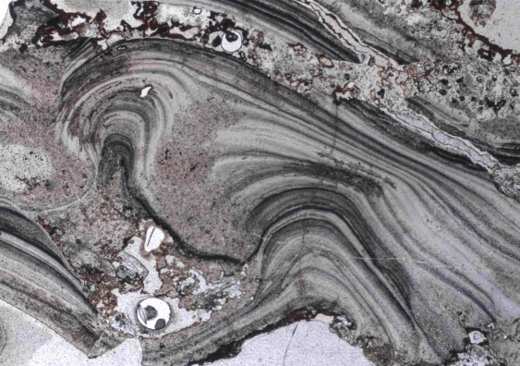
A microscopic image of geyserite textures from the ancient Dresser Formation in the Pilbara Craton in Western Australia. This shows that surface hot spring deposits once existed there 3.48 billion years ago.
Picture credit: The University of New South Wales
Evidence of Geyserite
Microscopic polished slices revealed the presence of the mineral geyserite in the Dresser Formation deposits. Geyserite (a form of silica), is associated with mineral deposits formed from hot springs or geysers, if extremophiles can survive in these harsh habitats today, then it is possible that they could have survived in very similar conditions on the primordial Earth.
Doctorate student Tara Djokic commented:
“The discovery of potential biological signatures in these ancient hot springs in Western Australia provides a geological perspective that may lend weight to a land-based origin of life.”
Researchers Examining the Waters Surrounding Hydrothermal Vents in New Zealand
Picture credit: Kathleen Campbell
Within the Pilbara hot spring deposits, the researchers also discovered stromatolites, layered rock structures created by communities of ancient microbes. In addition, there were other signs of early life in the deposits, including fossilised micro-stromatolites, microbial palisade textures and well preserved bubbles that are inferred to have been trapped in sticky microbial slime to preserve the bubble shape.
Out of this World Implications – The Search for Life on Mars
The researchers comment that their work has major implications with the regards to the search for extra-terrestrial life, particularly the search for life on Mars. The rocks that make up the Pilbara Craton are about the same age as much of the crust on the red planet. Ancient hot spring deposits on Mars could be a good place to search for evidence of long-extinct life.
NASA is currently planning a news Mars Rover mission (due to launch in 2020), one of the potential landing sites for the Mars land vehicle is the Columbia Hills. Previous Mars expeditions have identified silicates that could have been formed in the presence of hot water from a thermal vent. If evidence of ancient life on Earth, preserved in strata formed in a hot spring environment can be found, then such life processes may well have come about on Mars too and some evidence might be preserved in the ancient Martian rocks.


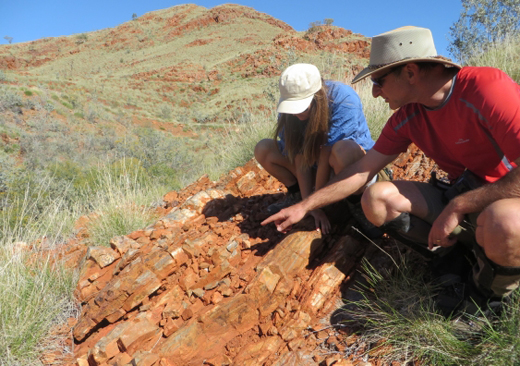
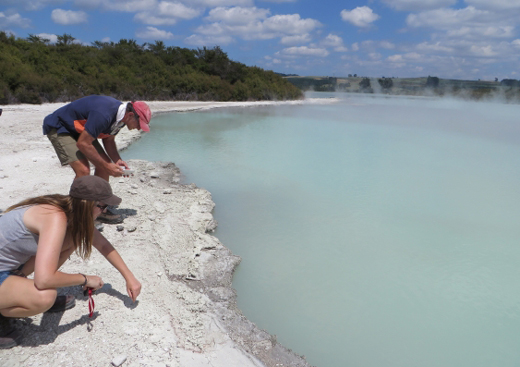




Leave A Comment